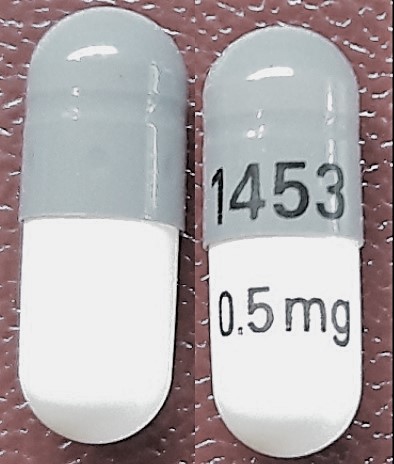Anagrelide Disease Interactions
There are 4 disease interactions with anagrelide.
Anagrelide (applies to anagrelide) cardiac disease
Major Potential Hazard, High plausibility. Applicable conditions: Cardiovascular Disease
The use of anagrelide may produce a positive inotropic effect, vasodilation, tachycardia, palpitations, and congestive heart failure. Therapy with anagrelide should be administered cautiously in patients with cardiac disease. A cardiovascular examination is recommended prior to beginning therapy with anagrelide.
References
- (2001) "Product Information. Agrylin (anagrelide)." Roberts Pharmaceutical Corporation
Anagrelide (applies to anagrelide) liver disease
Major Potential Hazard, High plausibility.
Anagrelide undergoes extensive metabolism in the liver, with less than 1% recovered unchanged in the urine. Therapy with anagrelide should be administered cautiously in patients with liver disease (bilirubin, SGOT, or other liver measurements greater than 1.5 times normal) and only when the benefits outweigh the risks. Monitoring for signs of liver toxicity is recommended.
References
- (2001) "Product Information. Agrylin (anagrelide)." Roberts Pharmaceutical Corporation
Anagrelide (applies to anagrelide) renal dysfunction
Major Potential Hazard, Moderate plausibility.
The use of anagrelide has been rarely associated with renal failure most often in patients with serum creatinine values greater than 2.0. Therapy with anagrelide should be administered cautiously in patients with renal dysfunction. Monitoring for signs of renal toxicity is recommended in these patients.
References
- (2001) "Product Information. Agrylin (anagrelide)." Roberts Pharmaceutical Corporation
Anagrelide (applies to anagrelide) pulmonary dysfunction
Moderate Potential Hazard, Moderate plausibility. Applicable conditions: Pulmonary Impairment
The use of anagrelide may cause interstitial lung diseases, including allergic alveolitis, eosinophilic pneumonia, and interstitial pneumonitis. The symptoms may present as progressive dyspnea with lung infiltrations. Close monitoring should be exercised when using this agent in patients with pulmonary dysfunction. It is recommended to discontinue anagrelide and evaluate the patient if symptoms of pulmonary toxicity occur.
References
- (2001) "Product Information. Agrylin (anagrelide)." Roberts Pharmaceutical Corporation
Anagrelide drug interactions
There are 401 drug interactions with anagrelide.
Anagrelide alcohol/food interactions
There is 1 alcohol/food interaction with anagrelide.
More about anagrelide
- anagrelide consumer information
- Check interactions
- Compare alternatives
- Pricing & coupons
- Reviews (3)
- Drug images
- Latest FDA alerts (2)
- Side effects
- Dosage information
- During pregnancy
- Drug class: miscellaneous coagulation modifiers
- Breastfeeding
- En español
Related treatment guides
Drug Interaction Classification
| Highly clinically significant. Avoid combinations; the risk of the interaction outweighs the benefit. | |
| Moderately clinically significant. Usually avoid combinations; use it only under special circumstances. | |
| Minimally clinically significant. Minimize risk; assess risk and consider an alternative drug, take steps to circumvent the interaction risk and/or institute a monitoring plan. | |
| No interaction information available. |
Further information
Always consult your healthcare provider to ensure the information displayed on this page applies to your personal circumstances.


